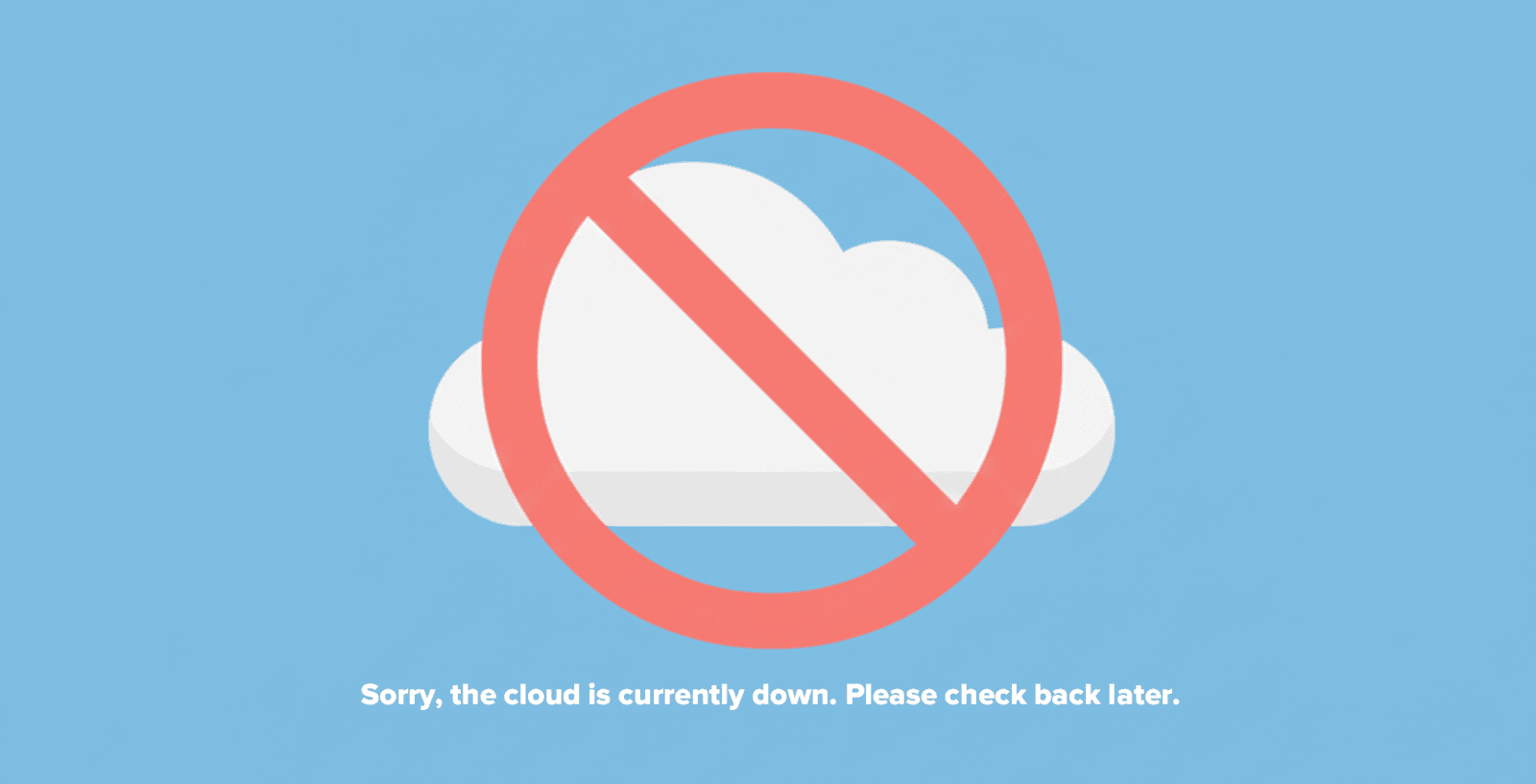Why the AWS Outage Exposes Your Single Point of Failure

When a single human error in a Northern Virginia data center brings down cloud giants like Zoom, Slack, and Athena, your biggest IT risk isn't the technology—it's governance and Concentration Risk.
Your Most Trusted Vendor is Also Your Biggest Concentration Risk
The massive AWS US-EAST-1 outage was the kind of event that stops entire industries in their tracks. It wasn't just a brief inconvenience; it was a global paralysis. For roughly fifteen hours, services we rely on daily—collaboration tools, logistics platforms, financial institutions, and countless mid-market businesses—were frozen.
It’s natural for the headlines to blame the vendor, and it’s tempting to treat the event as a rare, random technological flaw. But as advisers focused on reducing risk, we see something far more critical: the outage wasn't fundamentally a technical failure. It was a failure of governance and strategy that exposed a massive, invisible risk hiding in plain sight.
No technology is perfect, and human error is inevitable—even for the world’s most sophisticated cloud providers. Our job is to build a strategy that expects, and survives, the inevitable. This is the definition of true business resilience.
The Core Issue: What is Concentration Risk?
The real enemy revealed by the outage is Concentration Risk.
In simple terms, Concentration Risk is the danger of having all critical operational dependencies tied to a single vendor, a single platform, or a single geographic region. When you consolidate your mission-critical applications—your UCaaS, your CRM, your analytics, and your entire DR/Backup environment—all within one vendor’s ecosystem and, critically, in a single region like US-EAST-1, you’ve built yourself a beautiful, modern Single Point of Failure.
In the era of on-premise IT, your single point of failure was often a server in your closet. You could see it, touch it, and often smell it if it was overheating. Today, that single point of failure is disguised. It’s cleaner, more distributed, and far more complex to manage, but it remains one: one regional data center, one human error, or one localized major weather event can bring down your entire operation.
This wasn't an isolated incident, either. While the scale of the US-EAST-1 event was unprecedented, smaller, similar-issue outages are relatively common across all major cloud platforms. The reality is that the internet itself is a system of interconnected failure points. The problem isn't the cloud; the problem is the lack of strategic diversification within the cloud.
Why Governance is the Weakest Link
The most common question we hear is: "Why did so many companies expose themselves this way?"
The answer lies in two critical organizational pressures: Complexity Fatigue and Decision Paralysis.
Complexity Fatigue: When moving to the cloud, the sheer volume of choices, configurations, and pricing models can be overwhelming. It feels easier—less fatiguing—to just go "all-in" on one hyper-scale vendor and simplify the contract. This quick-fix simplicity, however, breeds a far more serious, long-term risk. You trade short-term convenience for long-term vulnerability.
Decision Paralysis: The pressure to move fast often leads to the implementation of the first viable solution rather than the most resilient one. The governance and strategic review process often fails to keep pace with the technical deployment, resulting in an accidental architecture where core services are unknowingly dependent on a single physical location.
The AWS event demonstrated that you can spend billions on the world's best engineering, but if your strategy doesn't account for the possibility of human error or a region-wide failure, you have not adequately reduced your risk.
Are You Exposed? An Honest Look at Mid-Market Vulnerability
While the major news focused on the massive companies impacted, the lesson for the mid-market is even more urgent. A large enterprise might have the internal resources and budget to switch vendors quickly or weather a multi-day financial loss; a mid-sized business may find itself in an existential crisis after such a period of downtime.
To translate this technological event into clear business outcomes, consider the operational cost of the outage:
Financial & Operational Paralysis: If your core ERP, supply chain, or payment processing application lives in that single, affected region, you’re not just offline—you’re financially paralyzed. You can’t process payments, manage inventory, or close your books. The revenue stops, but the expenses don't.
Customer Experience & Brand Damage: Your collaboration tools are down. Your customer support team can’t communicate internally or access the CRM system to track tickets. Customer trust—hard-won over years—can erode in hours when they see your core services are unreliable.
The Contingency Illusion: This is perhaps the most dangerous exposure. If your disaster recovery (DR) or backup environment is strategically tied to the same single region as your production environment, you have an illusion of resilience, not the real thing. When the primary location fails, the DR fails with it, leaving you without a workable contingency plan.
The most pragmatic step you can take right now is to honestly assess your exposure with two simple questions:
Where do your mission-critical applications (CX, ERP, Data Analytics) actually reside? (Specifically, which cloud, and which geographical region within that cloud?)
Are your production and Disaster Recovery/Business Continuity strategies tied to the same geographic region?
If the answer to that second question is yes, you are currently operating with an unnecessary and unacceptable level of Concentration Risk.
The Strategy-First Approach to Resilience
The goal here isn't to fear-monger or advocate leaving the cloud. The cloud offers too much agility, scalability, and value to abandon. Our purpose is to provide clear-eyed, pragmatic advice: Cloud strategy must be strategy-first, not vendor-first.
The only way to genuinely manage Concentration Risk is through intentional strategic sourcing. This requires moving from an accidental, "Single-Cloud" dependency—which breeds risk—to an intentional Strategy-Cloud architecture that builds resilience by design.
The AWS outage was a gift: a free, massive, and expensive lesson in risk management paid for by the industry as a whole. The next step is moving from realization to resilient design.
What's Next?
Realizing the risk is the essential first step. It is the decision to move from a reactive position to a strategic one.
In Part 2 of this series, we will break down the practical, low-cost architectural shifts—specifically Multi-Region and Hybrid-Cloud strategies—that move your business from accidental dependency to intentional resilience. These are not massive IT overhauls; they are clear, strategic sourcing decisions that reduce risk and simplify complexity, giving you the peace of mind you deserve.
Read more about cloud in our other posts:

